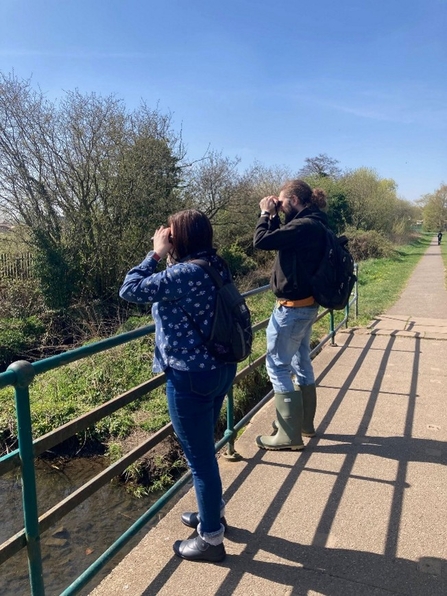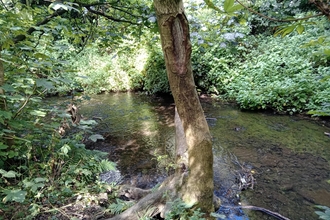Volunteers and Voles
Kevin Ford/Warwickshire WT
I hope that seeing endangered water voles so close to the heart of Nuneaton will help motivate the community to take action for nature in future.

Lee Copplestone/Warwickshire WT
Volunteers in Nuneaton have combined litter-picking with a spot of water vole watching! By Lee Copplestone
Where two small brooks join in Attleborough is a very special place. Every day, many people pass over the footbridge oblivious to the tiny but amazing wildlife spectacle taking place beneath their feet. This location has become a hot spot for the UK’s cutest and most endangered wild animal. Water voles are regularly seen from this footbridge less than a mile from Nuneaton town centre. With a little patience and by staying quiet, you can see them swim and feed only metres away from you. There’s no need for expensive binoculars or telescopes.
The best way to spot them is to look out for ripples in the water as they swim along the brook or cross from one side to the other. Water voles are Vegetarians so, if you see the tops of the bankside vegetation twitching, this may be a sign they are feeding at the base of the plant. If you’re very lucky you might see them sitting on the bankside nibbling on aquatic plants or scurrying between their burrows excavated in the mud.
The water vole is famously known as 'Ratty' in Kenneth Grahame's classic children's tale, The Wind in the Willows. Despite being sometimes referred to as a 'water rat', there is no such thing - there are brown rats, black rats and water voles. Although easily confused with rats, water voles are quite different; they have much less protruding ears and more-rounded heads. They look more like a Guinea pig or a miniature beaver, minus that odd tail. Incidentally, water vole’s tails have fur, unlike rats which have a bare tail, but this is difficult to distinguish when they are wet, which for water voles is most of the time!
Warwickshire Wildlife Trust Community Organiser, Lee Copplestone, often sets up a water vole watchpoint on the footbridge to help connect the community with nature while listening to their thoughts about wildlife. Lee explains his thinking, “I hope that seeing endangered water voles so close to the heart of Nuneaton will help motivate the community to take action for nature in future”. While you’re waiting for one to appear you can enjoy watching beautiful iridescent damselflies flitting over the water or look skywards to see buzzards soaring or maybe even glimpse an elegant red kite gliding overhead. Don’t look away for too long though - you might miss an elusive little water vole as it breaks cover for a few seconds!”
Encouraged by the Community Organiser, Attleborough Wildlife Watchers are reporting their water vole sightings as well as keeping an eye on any damage caused to their habitats by building work on the nearby housing development. They are helping to highlight the importance of protecting our green spaces and our most endangered wildlife from human activity and campaigning for nature-friendly housing developments.
The Wildlife Watchers have also joined forces with staff and residents from the local care home to do regular litter-picks. They clear up plastic and metal rubbish that presents a danger to wildlife. The litter-pickers always pause to look out for wildlife when they reach the footbridge over the brook. These days, there are not very many places in the UK where you can spot endangered water voles while out litter-picking on a Friday morning!
Read more about water voles here and the water vole recovery project here.

Lee Copplestone/Warwickshire WT


